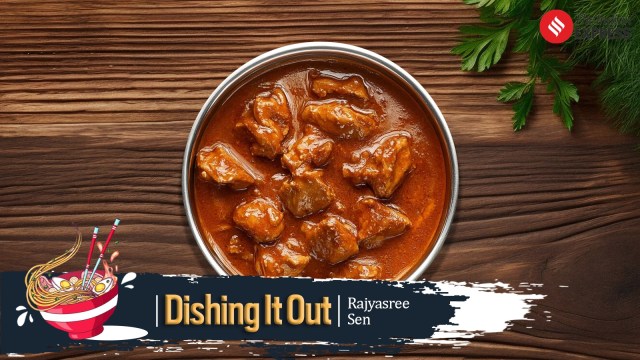📣 For more lifestyle news, click here to join our WhatsApp Channel and also follow us on Instagram
What connects the Indigo Revolt to an Indian meat dish that won hearts worldwide?
If the dish’s popularity inspires more people to learn about the Champaran Satyagraha and its role in India’s history, then it’s a win-win.
 Who knew that one day we’d be talking about a delicious mutton dish when we spoke of Champaran?
(Photo: Freepik)
Who knew that one day we’d be talking about a delicious mutton dish when we spoke of Champaran?
(Photo: Freepik)Delhi’s boho-chic markets, like Hauz Khas Village and Shahpur Jat, have always intimidated me. Their quirky shops and precariously located restaurants seem like fire hazards waiting to happen. Many moons ago, when regional cuisines suddenly started seeing a much-needed spurt, strange corners of these markets became the unlikely hubs for premium restaurants serving Andhra, Bihari, and Assamese food. One sweltering Delhi summer day, I was tricked into going to a Bihari restaurant tucked into one such market and found myself reluctantly climbing three flights of stairs. While most of the food didn’t leave a lasting impression, the Bihari mutton curry was unforgettable — tender, spiced mutton swimming in a thin, spicy gravy with a generous layer of flavourful oil, which you ate with steamed rice.
This dish, known as Champaran mutton or ahuna mutton, has seen a surge in popularity over the past couple of years. While writing this article, a quick search on food delivery apps revealed that 42 restaurants in Gurugram served it. But Champaran’s story doesn’t just begin with this hearty delicacy — its name is forever tied to the origins of India’s freedom struggle.
Champaran, a small town in Bihar, was the epicentre of the Champaran Satyagraha in 1917. This movement, spearheaded by Mahatma Gandhi, protested the British exploitation of local farmers, who were forced to grow indigo on their lands without fair compensation. The success of this civil uprising laid the foundation for India’s larger Independence movement.
Who knew that one day we’d be talking about a delicious mutton dish when we spoke of Champaran?
Champaran mutton exemplifies the success of a delicacy lying in its simplicity. Also known as ahuna Mutton, ahuna meaning “earthen pot” in Bhojpuri, the dish involves marinating mutton with spices, yoghurt, and mustard oil for a couple of hours or even overnight, and then slow-cooking it in a sealed pot for two to three hours. No water is added; the meat cooks in its juices. What you get is a tender mutton curry with robust flavours in a spicy gravy. It’s the perfect dish for novice cooks as it requires no stirring or sautéing and tastes even better the next day. This is hearty, comfort food.
This slow-cooking process method is not unique to Bihar. One of my closest friends makes an equally delicious Oriya mutton curry using a similar technique: marinating mutton in spices with large chunks of onions and then slow-cooked in its juices. In Tarkulha, a small village near Chauri Chaura – another place that played a pivotal role in the freedom struggle – Tarkulha mutton is prepared in earthen pots and offered as prasad at the local Devi Tarkulha temple.
The simplicity of Champaran mutton’s cooking process is also why this dish is being served by the kilo by restaurants and dhabas. They simply need to mix the mutton or chicken with all the spices and ingredients, sauté for a bit, seal the dish, place it on a flame, and forget about it. For meat lovers, I would strongly recommend it.
If this dish’s growing popularity inspires more people to learn about the Champaran Satyagraha and its role in India’s history, then it’s truly a win-win.
For those keen to try this delicious dish, here’s the Champaran mutton recipe I swear by. It’s a game-changer!
Champaran mutton
Ingredients:
• 1 kg mutton cut into medium-sized pieces
• 4 tablespoons mustard oil
• 4 onions in large chunks
• 2 tomatoes finely chopped
• 2 tablespoons ginger-garlic paste
• 4 green chilies chopped
• 1 tablespoon turmeric powder
• 2 tablespoons red chili powder
• 2 tablespoons coriander powder
• 1 tablespoon cumin powder
• 1 tablespoon garam masala powder
• 1 teaspoon mustard seeds
• 1 teaspoon fenugreek seeds
• 1 teaspoon fennel seeds
• 1 teaspoon nigella seeds (kalonji)
• 1 cup yogurt whisked
• Salt to taste
• Fresh coriander leaves chopped (for garnish)
Process
1. Marinade the mutton in all the ingredients listed.
2. Keep it in your fridge overnight or for at least 3-4 hours.
3. Heat a pan, and add the mutton with its marinade. Stir well until the mutton and the marinade starts to brown.
4. Lower the flame, cover the pot with a tight lid, and allow to cook for at least 2-3 hours.
5. I open the lid, and add a tablespoon of water and stir the mutton every hour.
6. If using a pressure cooker, cook the mutton for at least 12 whistles.
7. Once cooked, stir in 1 teaspoon of homemade garam masala (it makes all the difference), and you could add some coriander leaves.
Next week, I’ll be writing about Benne Dosa and why dosa is my Achilles’ heel.
📣 For more lifestyle news, click here to join our WhatsApp Channel and also follow us on Instagram



- 01
- 02
- 03
- 04
- 05

























